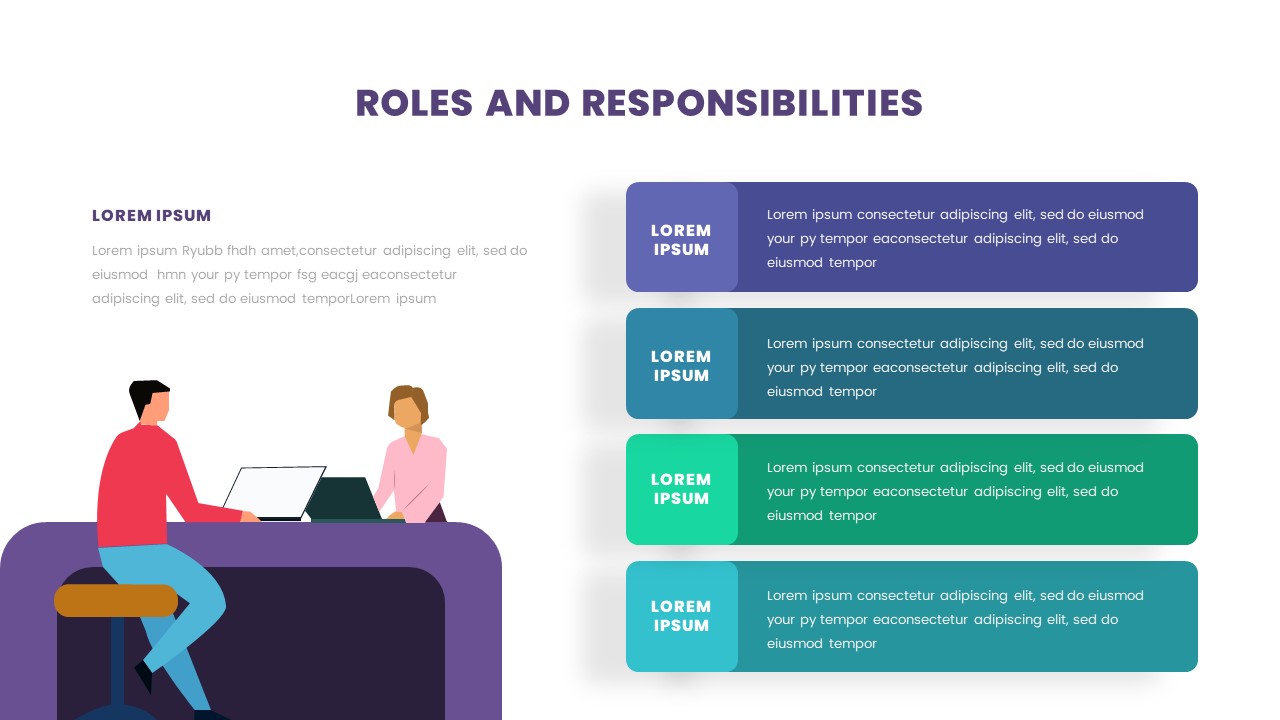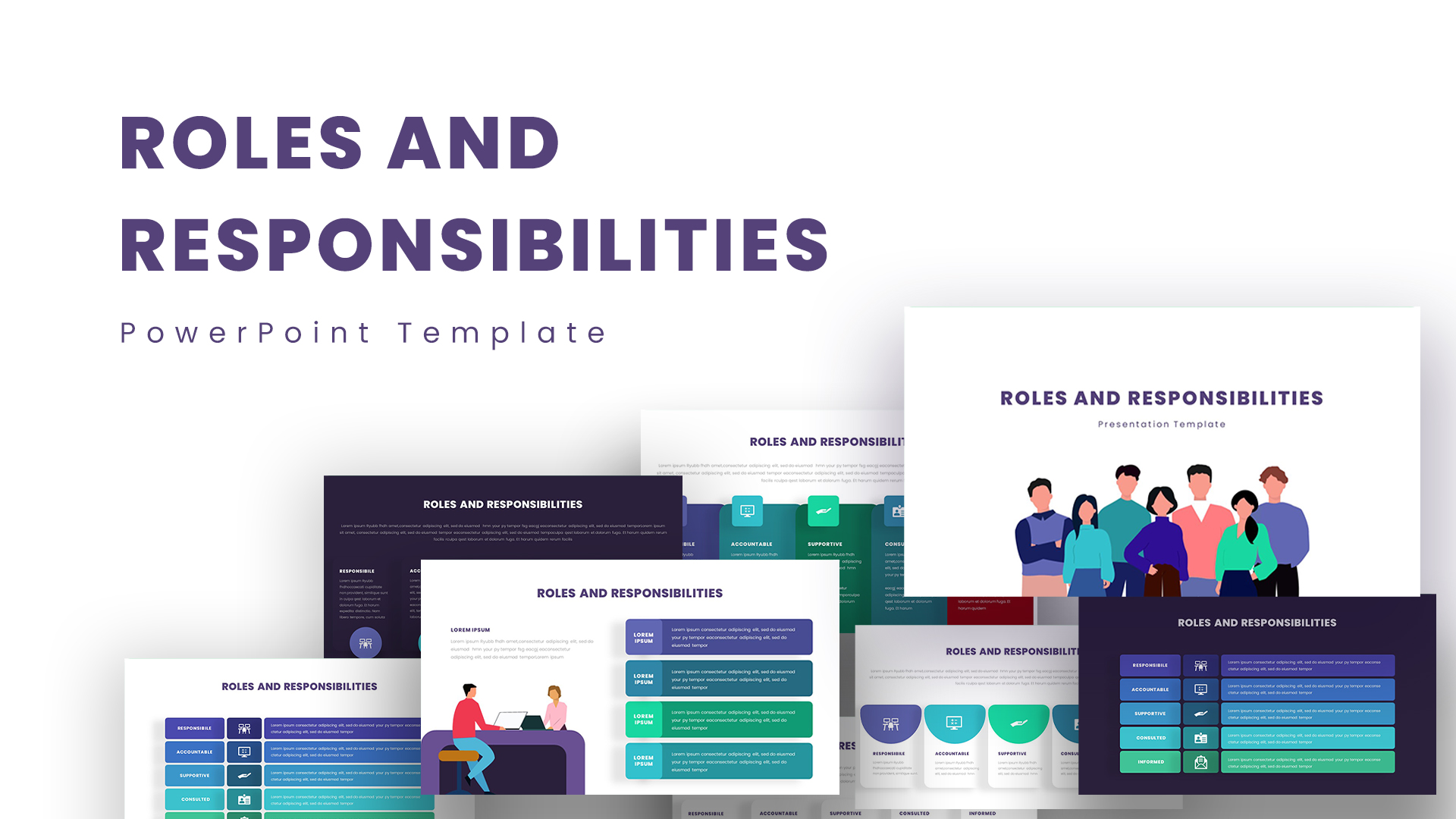PowerPoint-template-Roles-and-Responsibilities-


Description:
The Roles and Responsibilities RASCI model PowerPoint template helps clarify roles and responsibilities within a project using the Responsibility Assignment Matrix (RASCI). This practical and visually appealing template is designed to simplify complex project management tasks, making it easier for teams to track responsibilities and ensure effective execution. The RASCI model—Responsible, Accountable, Supportive, Consulted, and Informed—offers a structured way to assign and clarify roles within a team, ensuring that every member understands their responsibilities, key decision-makers are identified, and support mechanisms are in place.
This template is an ideal resource for business managers, team leaders, and project coordinators. It includes a variety of slide designs that can be customized to fit your specific project management needs. The use of bold, modern visuals enhances the clarity of the framework, making it easy to communicate the RASCI model across teams. Whether you are training employees, conducting workshops, or mapping out roles for a project, this slide deck can serve as a key tool for organizing and ensuring success.
With this template, you can seamlessly integrate RASCI charts into your presentations, making it a valuable asset for project planning, task delegation, or educational purposes. The included visuals and icons can be easily adjusted to fit your organization’s branding or educational goals, helping to enhance the overall effectiveness of your presentation.
Who is it for
This template is perfect for project managers, business owners, team leaders, and educators. It is especially useful for companies that need to communicate the roles and responsibilities of team members in a project setting. Business management students and HR professionals can also use this template for training and learning purposes.
Other Uses
Aside from project management, the RASCI model can be applied in various other scenarios such as corporate training, organizational development workshops, or team alignment meetings. It can also be repurposed for defining roles in business strategies, operational processes, or during corporate restructuring. Additionally, HR departments can use it to define roles in talent management, onboarding processes, and performance evaluations.
Login to download this file

















































